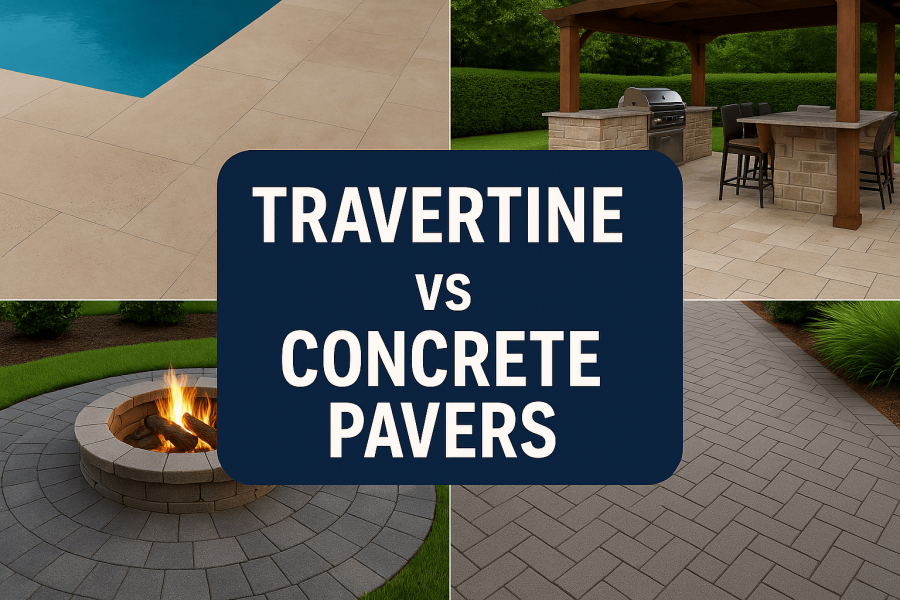- >
How to Choose the Right Hedge for your Landscape
- By: Cheli Scott
- Date: Jan 26 2023
Similar Articles
Artificial Turf vs Sod for Lawns, Backyards & DIY Makeovers
Thinking about artificial turf or sod? Discover the pros and cons of each—from cost and maintenance to durability and pet-friendliness—so you can choose the best option for your lawn or backyard project.
Travertine vs Concrete Pavers for Florida Pool Decks, Patios, Fire Pits & More | bhild
Compare travertine and concrete pavers for Florida pool decks, patios, and driveways — from heat retention and slip resistance to cost, maintenance, and curb appeal.
Beat the Heat: Florida Summer Landscape Survival Guide
Beat the Florida heat with smart summer landscaping. From drought‑tolerant plants to shaded retreats, this guide covers designs, materials, and maintenance tips to keep your yard thriving all season long.
How to choose the right hedge for your landscape
Have you been wondering how to choose the right hedge for your landscape? Hedging plants can add a sophisticated, manicured look to your garden. Whether you choose, short, medium, or large, the right hedge will quickly make a huge impact on your outdoor experience.
Choosing the right plant may seem confusing. There are an endless number of shrubs that can be trimmed into a hedge. However, picking the right plant is essential to your investment.
Why choose hedging plants
Hedging plants are excellent ornamental plants that can serve a number of purposes. If you live next to a busy street, a thick, tall hedge can block traffic noise.
Hedges can provide privacy, protect your garden from strong winds, and create a pleasing backdrop for garden designs. They work well as an alternative to fencing to mark a property line, delineate a garden, or line a walkway.
Ornamental hedges are cultivated to be attractive. There are even hedges cultivated to be protective with spikey thorns to serve as an intruder deterrent.
When chosen properly hedging plants should be low maintenance, disease free, and not too fast growing.
What is a hedging plant
Hedges are usually shrubs that have very practical uses. Grown in a line, they create a clear delineation that can be applied to a number of landscaping designs. They can serve many purposes and come in lots of textures, sizes, and varieties to suit your taste, purpose, and preferred maintenance schedule.
Types of hedges
Formal hedge
When you see a crisp green wall of leaves in a garden, your are looking at a formal hedge. Formal hedges are carefully pruned to form defined, sharp edges. In order to choose the right hedge for formal hedges, you need to look for hedging plants that can stand up to the frequent pruning necessary to maintain their shape.
Formal hedging plants should grow together into a smooth, seamless wall, so they need to be planted close together on a carefully plotted line. Boxwood, Yew, and Privet make some of the best hedges for a formal garden and can be pruned regularly.
Informal hedge
If you have a natural garden, you may be more interested in planting informal hedging plants. These hedges have a natural, organic shape without the crisp pruning required for formal hedging plants.
You have quite a bit more freedom to choose the right hedge when picking informal hedging plants. Since they don’t need to be clipped tightly you can choose plants with larger leaves than the small leaves you would choose for formal hedging.
Informal hedges often feature flowers, such as hydrangeas, which can have blue, pink, purple, or white flowers. Fushia, Lilac, and Forsythia also make pretty hedging plants.
Deciduous hedge
While a deciduous hedge may not be green year round, there are advantages to growing these hedging plants. Deciduous hedges, plants that lose their leaves in the autumn and winter, tend to be more natural looking than evergreens and often produce berries or flowers. Bridal wreath, for example, is a deciduous hedge with dense white flowers. These shrubs attract more wildlife because they provide food and shelter to many species.
The downside to deciduous hedging plants is that since they lose their leaves, you lose your privacy screen in the autumn and winter. However, you may gain a pretty show in the winter as their leaves change colors. Field maple makes a pretty hedge that turns orange in autumn.
Evergreen hedge
Griselinia, Box, and Holly are all dense evergreens that make a good hedging plant. Evergreen hedges, like the name suggests, stay green all year round, making them ideal privacy screens.
With dense growth and small leaves, they can be easily pruned into formal or informal hedges. These shrubs can become essential to wildlife, like birds, in your garden, who seeks the shelter of the leafy cover in the autumn and winter months.
Things to consider when choosing the right hedge
Purpose
The first thing you want to ask yourself when choosing hedging plants is, “what is my goal for my hedge?” Do you want a privacy screen hedge, a low maintenance divider, some pretty filler with flowers? Before you can start to parse through all of the options, you will need to know your purpose.
Hedges are very practical and can serve double duty. A protective hedging plant like holly, with spikey leaves, can also serve as an ornamental one with it’s attractive bright red berries.
Shape
When choosing hedging plants, look for a tightly packed, dense mound, circular, or pyramidal shape. You want the shape to be wider at the bottom than the top. These shapes will be easy to prune and will hedge quickly.
Size
Depending on the purpose of your hedging plant, you may want different sizes. If you want a privacy screen hedge, a large plant is desirable, but to outline a path, you will want a low hedge with dense leaves on ground level. Flowering, medium sized hedging plants make pretty, low upkeep statement pieces in a garden with tall formal hedges behind them as a background. As you can see, sizes and shapes can be mixed and matched with other hedges, trees, and flowers to create a contemporary look.
Maintenance
The best hedges are hearty and low upkeep. They need to be disease resistant plants that are suitable for your soil and climate conditions to reduce yard work as much as possible. Formal hedging plants will inevitably need to be pruned around three times a year, while natural hedges may only need to be pruned once.
When choosing a plant consider how much time you have to spare to put into the watering and pruning needs of the plants. It’s even more essential than other plants that hedges are well cared for to keep up your property value, curb appeal, and since they often serve as fences that face the street and neighbors.
If you can’t commit to trimming formal hedges, simply pick an informal species that will look nice without much pruning. A slow growing, dense hedge will also greatly reduce the time you spend pruning. While fast growing hedges will give you quicker results, you will also have to deal with more pruning to maintain their size. Look for native hedging plants that are drought resistant.
Native hedging
Opting for dense native hedging will save you some upkeep time because native species grow naturally wherever you are under the regular weather, water, and soil conditions.
Often a native hedge will have berries or flowers that are desirable for local birds and will attract them to your garden. Birds are also attracted to seed pods left behind in the autumn and winter season, so don’t prune them to feed the wildlife.
Virginia sweetspire in a North American native that blooms in early summer and where winter is mild can be an evergreen hedge. It tolerates the shade and drought conditions, making it a versatile hedge.
Black chokeberry is another North American hedge that produces berries and can tolerate wet soils as well as sandy soil. It blooms pink flowers in early summer and will do well in full sun or partial shade.
Soil conditions
Along with upkeep, before you choose a hedging plant have your soil tested at a local extension office. An extension office will tell you your soil’s pH and mineral content so that you can use that information to make smart choices about your hedge. Nutrient deficient, sandy soil, and heavy clay soil may require you to make amendments before planting a hedging plant.
Generally, hedging plants like well drained soil, but there are some varieties that can tolerate wet soils. If you are unsure what kind of soil you have, consider contacting a landscaping professional who can perform a soil drainage test and make recommendations for draining water logged soil.
With a bit of research, you may be able to find species that work well for your unique conditions without much amendment at all. For example, Holly does well in heavy clay soil, while swamp azalea can be planted in water logged soil and has beautiful white flowers.
Likewise, research whether or not your hedge will need to be planted in sun, shade, or partial shade.
Enlist help!
If you want beautiful hedges, without all of the work, consider hiring a landscaping company. A landscaper can help you choose, plant, prune, and maintain hedges regularly to keep them looking nice all year round. Consider working with a professional like the ones at bhild.com. Call us today, or fill out our form here for a free estimate on lawn services!















